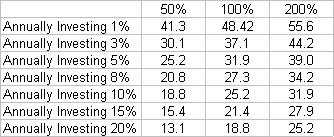Robert E. Rector of the Heritage Foundation has released his latest research on poverty in the US. The numbers on many of the 37 Million “poor” are surprising. Before jumping into Rector’s work let’s define poverty. The US Census Bureau uses the Office of Management and Budget’s Statistical Policy Directive 14. In 2005 the OMB defined the Poverty Thresholds at $9,367 – $43,254 depending on family size. (U.S. Census Bureau Report)
Does the high end of that spectrum seem, well, high? It should, the same report lists the median household income in the US for 2005 at $46,326. But it gets better because “The official poverty definition uses money income before taxes and does not include capital gains or noncash benefits (such as public housing, Medicaid, and food stamps).” – Appendix B. Which means if you have a large family and are using food stamps you can actually be both poor AND above the median household income. But that could be an extreme case, right? So let’s take a look at the top third of the poor and see just how nice “poverty” can be.
The Top One Third of the “Poor” in the US:
- Own a 3 bedroom 1 1/2 bath home worth $95,276 and have more living space than a European (Poor Americans have 439 sq ft per person while the average, not poor, European has 396 sq ft per person).
- Own two cars.
- Own two or more TVs – and most (75%) own a big screen. (Which you need to get the full enjoyment out of your cable or satellite feed)
- Own a computer
- Own a cel phone & a land line
- Own a stereo, dishwasher, microwave, DVD player & have air conditioning
When it comes to food – obesity, not malnutrition, is the greatest risk for today’s poor. But thankfully everyone in this group is able to get “important medical care” for such problems. Now this is not to discount what we must apparently dub “extreme poverty”. The bottom 10% of the poor don’t own a phone while 7% of the poor live in “over crowded conditions” (defined as more than one person per room). Extreme poverty is something that needs to be addressed, but remember the above numbers the next time a politician wants to raise taxes on the “rich” (middle class tax hikes) to help the “poor”.
When you think about poverty what comes to mind is homelessness and hunger – not big screens, houses, and cars. It seems to me that charities not the government are really fighting the war on poverty. If we want to help the truly poor, we should stop taxing the mid-middle, and upper-middle class to give nicer stuff to the lower-middle class. Gutting such misguided government programs will free up cash to go to soup kitchens and homeless shelters. No one wants someone else to go hungry, but also, no one wants to buy someone else a big screen. The sooner we make the politicians honest about the real problem, the sooner we can actually start fixing it.

